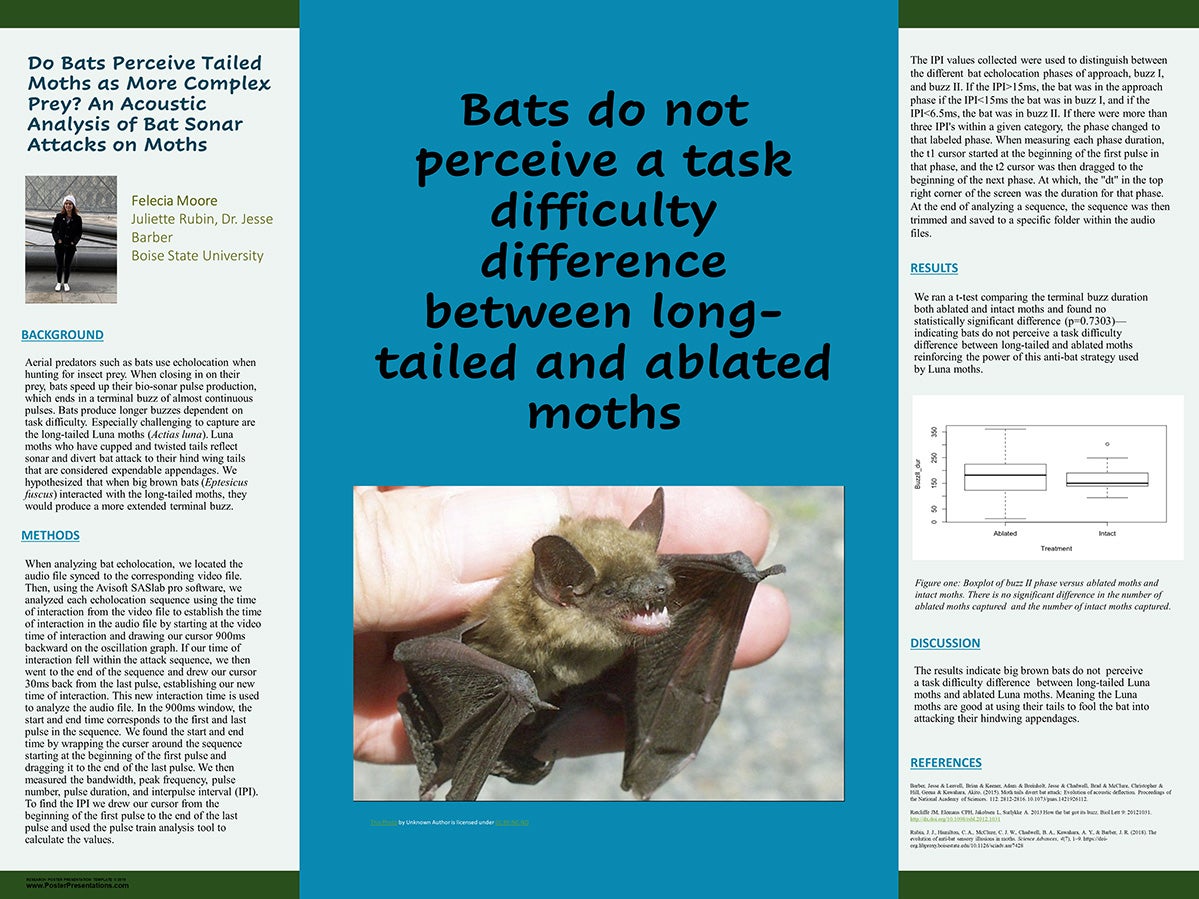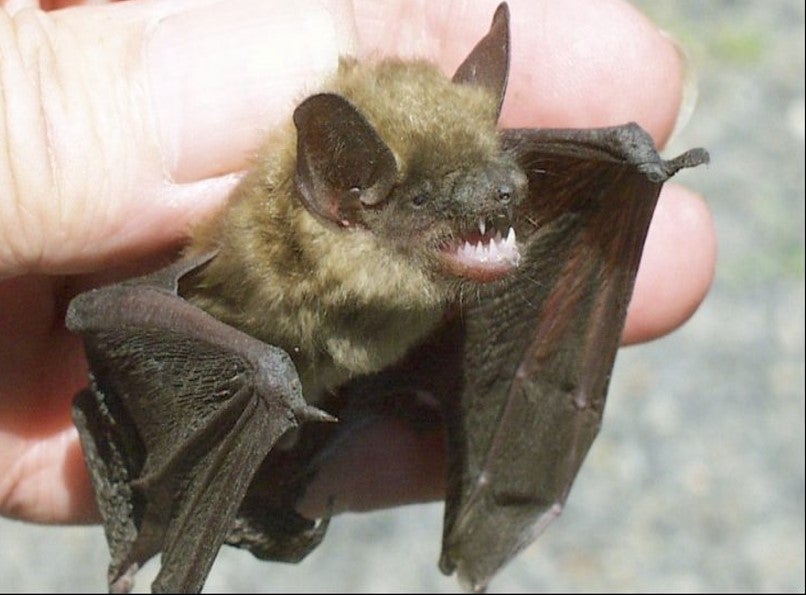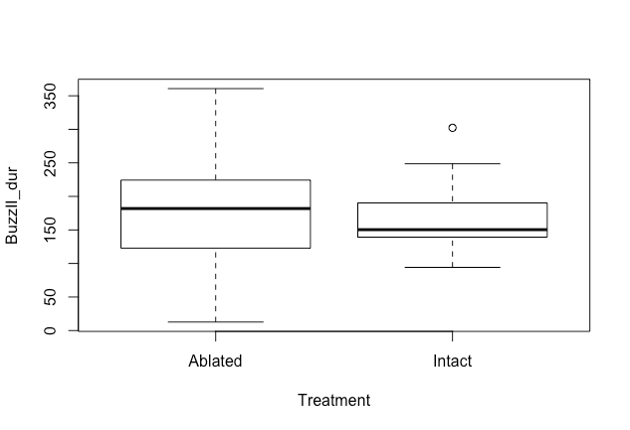Felicia Moore, Juliette Rubin, Dr. Jesse Barber

Bats do not perceive a task difficulty difference between long-tailed and ablated moths

Background
Aerial predators such as bats use echolocation when hunting for insect prey. When closing in on their prey, bats speed up their bio-sonar pulse production, which ends in a terminal buzz of almost continuous pulses. Bats produce longer buzzes dependent on task difficulty. Especially challenging to capture are the long-tailed Luna moths (Actias luna). Luna moths who have cupped and twisted tails reflect sonar and divert bat attack to their hind wing tails that are considered expendable appendages. We hypothesized that when big brown bats (Eptesicus fuscus) interacted with the long-tailed moths, they would produce a more extended terminal buzz.
Methods
When analyzing bat echolocation, we located the audio file synced to the corresponding video file. Then, using the Avisoft SASlab pro software, we analyzed each echolocation sequence using the time of interaction from the video file to establish the time of interaction in the audio file by starting at the video time of interaction and drawing our cursor 900ms backward on the oscillation graph. If our time of interaction fell within the attack sequence, we then went to the end of the sequence and drew our cursor 30ms back from the last pulse, establishing our new time of interaction. This new interaction time is used to analyze the audio file. In the 900ms window, the start and end time corresponds to the first and last pulse in the sequence. We found the start and end time by wrapping the curser around the sequence starting at the beginning of the first pulse and dragging it to the end of the last pulse. We then measured the bandwidth, peak frequency, pulse number, pulse duration, and interpulse interval (IPI). To find the IPI we drew our cursor from the beginning of the first pulse to the end of the last pulse and used the pulse train analysis tool to calculate the values.
The IPI values collected were used to distinguish between the different bat echolocation phases of approach, buzz I, and buzz II. If the IPI>15ms, the bat was in the approach phase if the IPI<15ms the bat was in buzz I, and if the IPI<6.5ms, the bat was in buzz II. If there were more than three IPI’s within a given category, the phase changed to that labeled phase. When measuring each phase duration, the t1 cursor started at the beginning of the first pulse in that phase, and the t2 cursor was then dragged to the beginning of the next phase. At which, the “dt” in the top right corner of the screen was the duration for that phase. At the end of analyzing a sequence, the sequence was then trimmed and saved to a specific folder within the audio files.
Results
We ran a t-test comparing the terminal buzz duration both ablated and intact moths and found no statistically significant difference (p=0.7303)—indicating bats do not perceive a task difficulty difference between long-tailed and ablated moths reinforcing the power of this anti-bat strategy used by Luna moths.

Discussion
The results indicate big brown bats do not perceive a task difficulty difference between long-tailed Luna moths and ablated Luna moths. Meaning the Luna moths are good at using their tails to fool the bat into attacking their hindwing appendages.
References
- Barber, Jesse & Leavell, Brian & Keener, Adam & Breinholt, Jesse & Chadwell, Brad & McClure, Christopher & Hill, Geena & Kawahara, Akito. (2015). Moth tails divert bat attack: Evolution of acoustic deflection. Proceedings of the National Academy of Sciences. 112. 2812-2816. 10.1073/pnas.1421926112.
- Ratcliffe JM, Elemans CPH, Jakobsen L, Surlykke A. 2013 How the bat got its buzz. Biol Lett 9: 20121031. http://dx.doi.org/10.1098/rsbl.2012.1031
- Rubin, J. J., Hamilton, C. A., McClure, C. J. W., Chadwell, B. A., Kawahara, A. Y., & Barber, J. R. (2018). The evolution of anti-bat sensory illusions in moths. Science Advances, 4(7), 1–9. https://doi-org.libproxy.boisestate.edu/10.1126/sciadv.aar7428
Additional Information
For questions or comments about this research, contact Felecia Moore at feleciamoore@u.boisestate.edu.